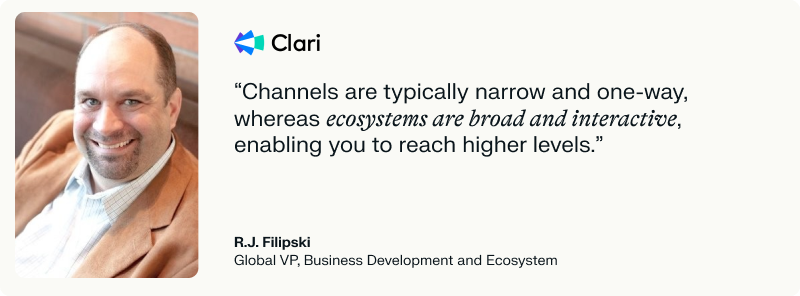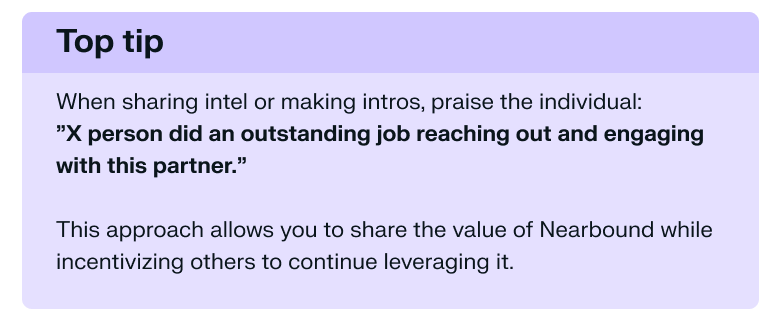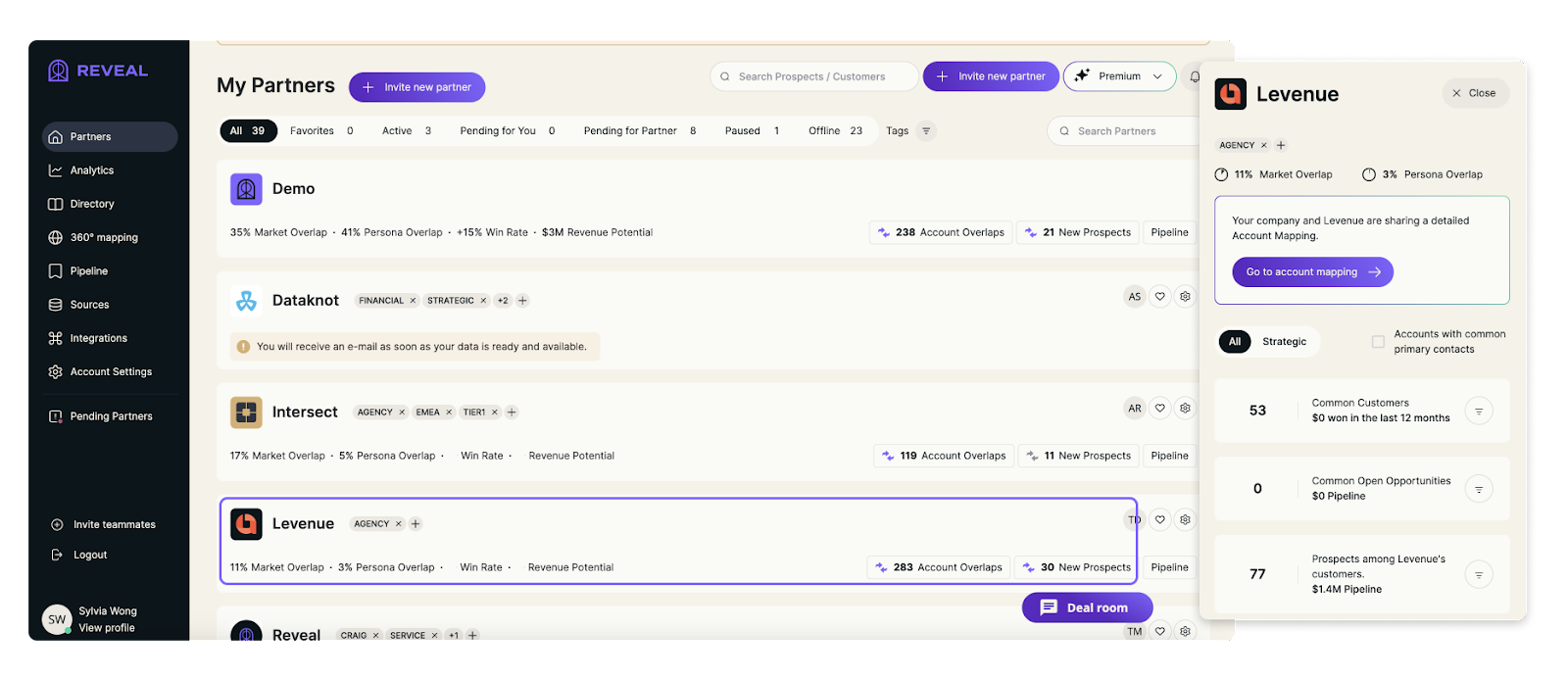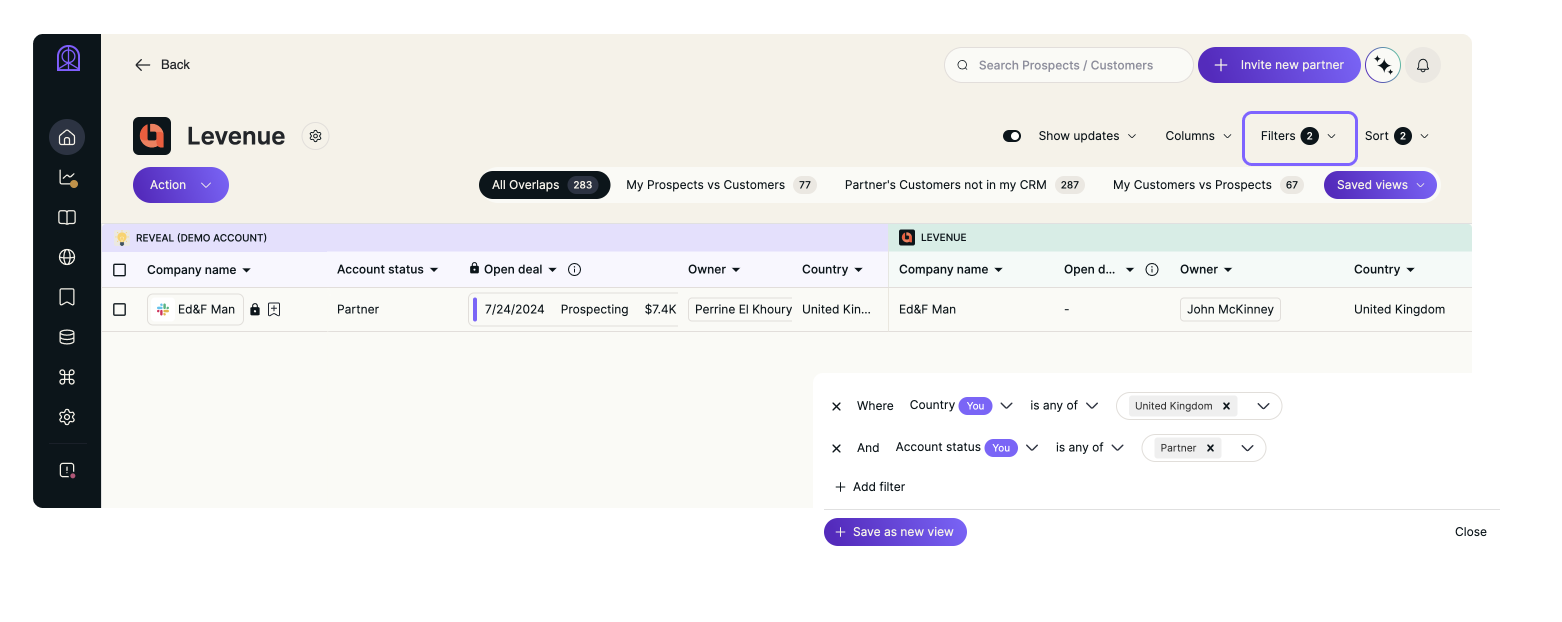In this article you’ll learn:
- How to get the right attitude to gain Nearbound buy-in
- How to use Nearbound data to expand into new markets
- How to activate your teams on Nearbound data
Have you ever heard of the blue ocean and red ocean business strategy?
Well, it basically tells you that we live in an economy with two types of markets:
- An uncontested market space where you capture new demand (blue), and
- An existing market space where you exploit existing demand (red).
Marketers are constantly looking to reach a blue ocean. However, the information saturation and noise created by inbound and outbound channels have forced companies to “survive” in red oceans.
Breaking into new markets (blue ocean) is easier said than done. What many marketing teams haven’t fully understood is that they can’t market alone. They need the help of people or companies that have done this before. They need to leverage the trust that their ecosystem has already created.
If you can’t enter a stranger’s house without an invitation from someone that person already knows, why on earth will you enter a new market without someone who can introduce you to it?
That’s where Nearbound comes in. It is the key to that new market’s door.
The Nearbound motion
Nearbound is a Go-To-Market strategy that taps into the power of your ecosystem. When you partner with those your buyers already trust, you close more deals faster.
Nearbound unlocks faster revenue growth and helps overcome challenges in partnership, marketing, and sales through your ecosystem’s trust.

It is so mighty that it increases your win rates by 41% and your deal sizes by 43%. And is so efficient that it generates on average $56M sales pipeline and gives you access to 14,000 qualified prospects.
So, how can you combine the power of Nearbound with the goal of breaking into new markets?
We recently sat down with R.J. Filipski Global VP of Business Development and Ecosystem at Clari, in one of our Nearbound at Work sessions to lay out two major topics:
1. Getting Nearbound buy-in from your team, and
2. Using Nearbound to break into new markets
You have to do the first one before you can do the second. Here’s how:
The attitude play
You might feel that your company is not recognizing enough any of your efforts, and we get it, it’s annoying, but in order to build a culture of collaboration, you might need to be conscious that you’ll not always be the headline.
It’s not that what you do is not important (because it is), what we’re saying is that you need to highlight those small wins and positive attitudes from your GTM teams toward your Nearbound program.
- Celebrate small victories. Make some noise every time any marketer or sales rep asks you for intel, or whenever they reach out to a partner. If you do this on a regular basis you will actually create a positive attitude and FOMO in your teams. You will turn “Why should I do this” to “Oh, this worked for my teammate, I should really look at trying to do that thing as well.”
- Talk about things you don’t “tolerate”. It’s easy for your GTM teams to start complaining about how partners are delaying the deal, or how they aren’t being responsive, however, this hinders trust between your teams.
Talking about complaints will help you understand the root of the problem, making it easier for you to fix and turn those complaints into successes. - Driving team success. If you really want to create a winning team, you should find creative ways to attribute the success to your strategy. When you’re starting a partner program, you should focus first on helping your team source and influence revenue through Nearbound. Once your teams are fully on board with your strategy, it will be easy to prove value.
Whenever you feel that you’re not getting enough credit for the influence you’re bringing to deals, here’s what you can do:

The enablement play
There’s no better way to lead than with an example. And getting Nearbound buy-in from your teams isn’t that different. You need to showcase how Nearbound data can solve their day-to-day challenges.
One common struggle that your team might have is finding new ways of expanding their reach or “attacking” new markets, so show your Marketing team how they can overcome that challenge with Nearbound data.
The key here is to leverage the trust that already exists in your ecosystem. Nearbound will help them obtain that intel, get those intros, and surround your prospects with trust to influence the purchase decision.
Here’s the step-by-step guide to expanding into new markets:
1. Choose 1 or 2 members of your Marketing team who are curious enough to learn how to improve their marketing strategy.
2. Give your team access to your account mapping platform—a.k.a. Reveal.
3. Help your team identify which partner has the highest market and persona overlap.

The partner view in Reveal.
4. Start account mapping. Filter according to the country or “new market” you want to break into. To quickly identify your partners in those markets filter also by account type and choose “partners”.

The Account mapping view with the country and account status filters.
5. Once you have identified those key partners who are in the markets you want to enter, you can start leveraging the trust they have built in that market. You can even ask that partner for an intro.

Reveal Engage.
6. Once you have the right partner, you will be able to get the right intel, and you will be able to deliver the right message to the right people to boost partner revenue. Leverage the Who Economy and ask them for Nearbound intel such as:
- What other tech are they and their market using?
- Who are the people inside those organizations that can help you understand the strategies they used to enter this market?
- Who are the system integrators they have already worked with?
- Who are the local influencers?
- Who can you co-market with?
Nearbound is more than saying “We got a deal”; Nearbound is giving your teams access to the intel, intros, and influence needed to generate qualified net new prospects and build effective marketing campaigns that drive revenue growth.
The activation play
Once your teams understand the value of Nearbound data, they find the “aha moment” that transforms them into Nearbound champions. To help them on that enablement journey, make sure you:
- Select a channel that you can leverage for sharing Nearbound intel. Use the channels your team is already using, like Slack. Take the success stories and put them into your most used channels at moments that matter, for example, company meetings (take 15 mins once a quarter to share the success stories).
- Create educational and training programs. Invest in comprehensive education and training programs to ensure that your teams understand the concept, benefits, and implementation of Nearbound. Provide clear explanations of how Nearbound aligns with their objectives and demonstrate its value in driving revenue growth.
- Action the attitude play. Recognize and celebrate the achievements of your team members who embrace Nearbound and actively contribute to its success. If this isn’t part of your budget, start with posting regular “kudos” to those people that action Nearbound intel.
Top tip: Have a give-get mentality. When you start a partnership, try to give 60% and expect 40% (especially in new partnerships). Your partners and their teams will want to work with you more if they see you’re invested in their success. This is how it works:
The “aha” Nearbound moment
Implementing the Nearbound motion requires companies to recognize the importance of their ecosystem and embrace a culture of collaboration. By following three key plays: attitude, enablement, and activation, organizations can generate a transformative "aha Nearbound moment" and drive revenue growth through effective strategies.
If you’re ready to unlock the power of Nearbound and create that game-changing moment for your organization, book a demo with us. Our team will guide you through the process, showcasing how Nearbound can revolutionize your approach to sales and marketing, and help you generate qualified net new prospects.
Don’t miss out on the opportunity to tap into the vast potential of your ecosystem, leverage trusted partnerships, and achieve remarkable results.



